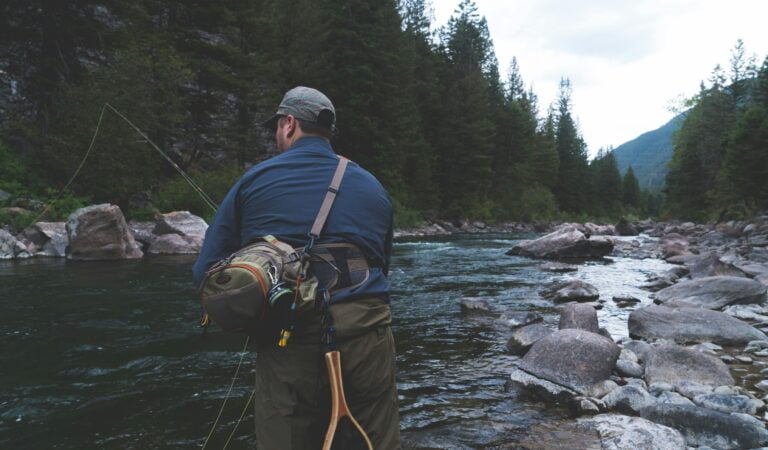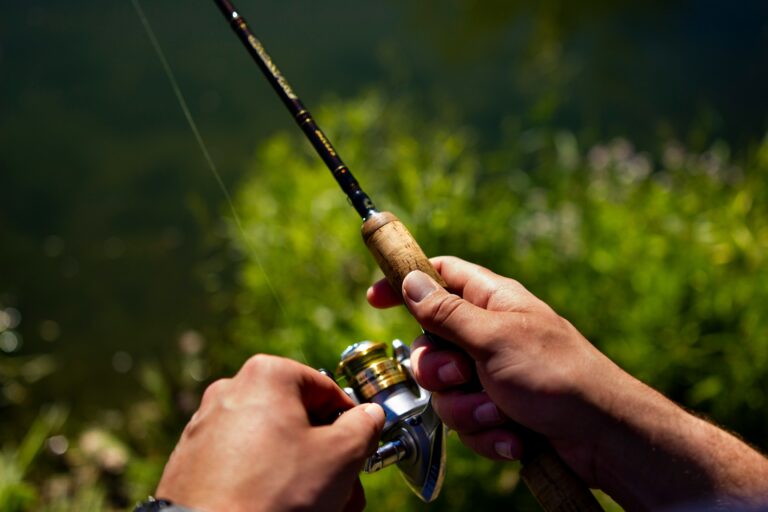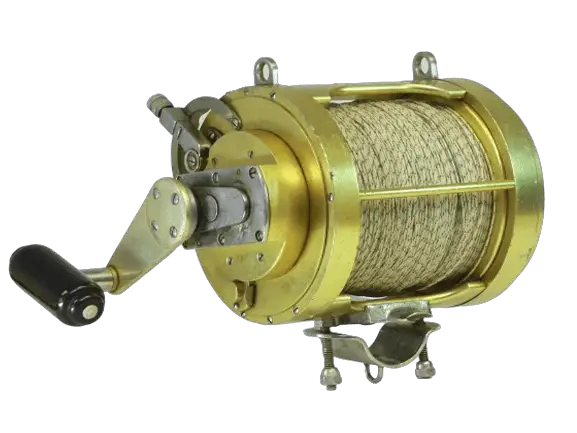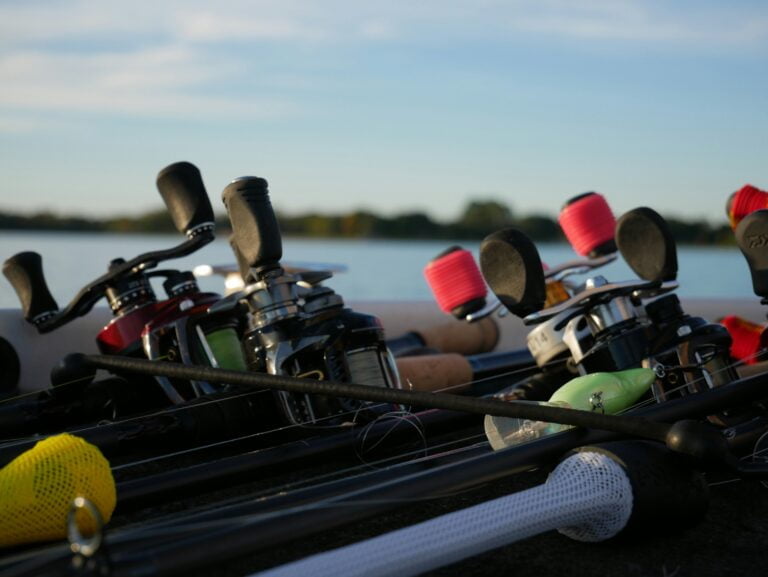What Is The Best Gear Ratio For Bass Fishing 2024
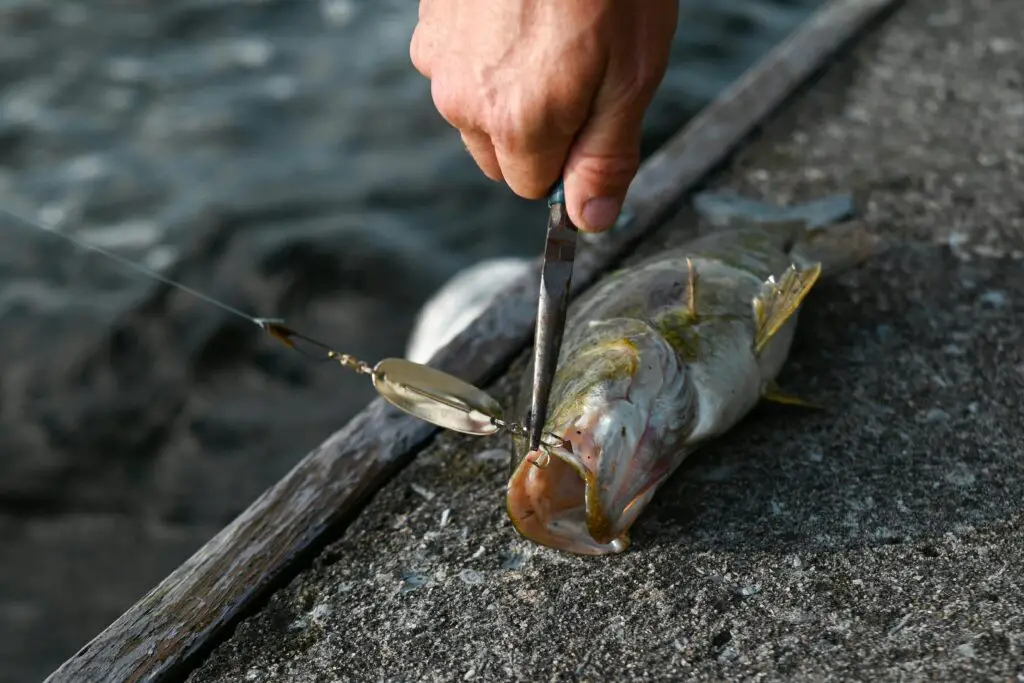
The line tightens, a burst of green darts underwater, and adrenaline surges. You battle fiercely, yet as you near, the line slackens, and the fish eludes the hook. Frustration? Devastation? You ponder.
But what if I informed you that this heartbreak might be because of something as seemingly insignificant as more than a few in your reel? That quantity, my buddy, is the tool ratio, and it performs a much larger position in bass fishing than you may think.
It’s the silent conductor of your retrieve, dictating how fast your lure races via the water, and may in the end be the difference between an epic trap and an empty livewell. So buckle up, because we’re diving deep into the arena of equipment ratios and how to pick the ideal one to make your bass fishing goals a reality.
What Is The Best Gear Ratio For Bass Fishing Comprehensive Guide 2024
What is a gear ratio?
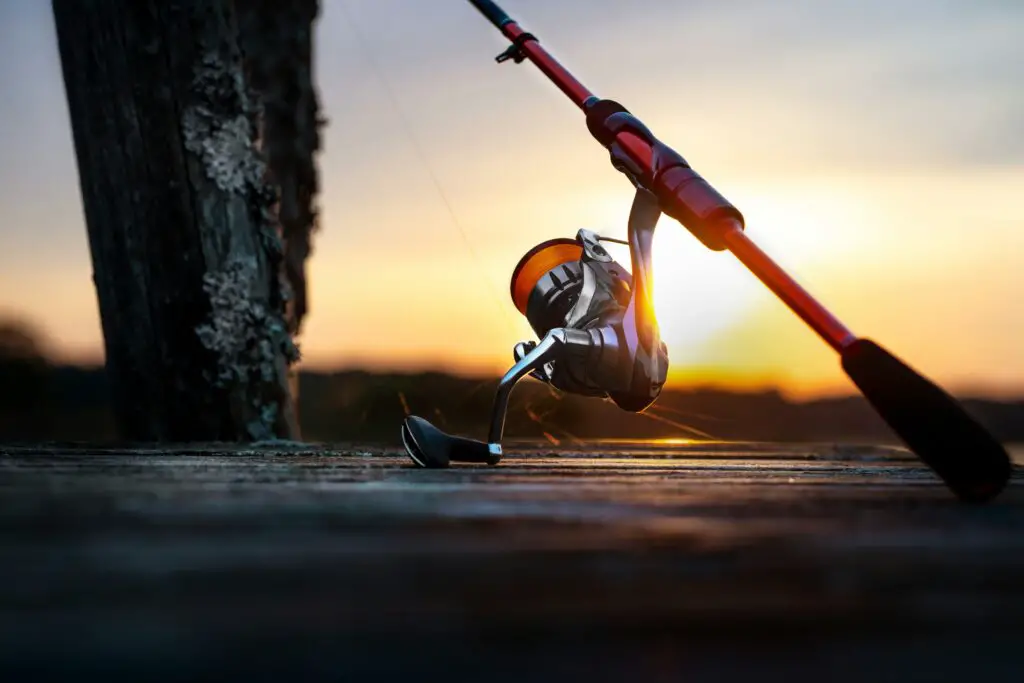
The gear ratio for your fishing reel may appear to be a technical mystery, but it’s in reality a quite truthful concept. Imagine your reel as a machine with two gears: one related to the spool that holds your fishing line and the other to the spool that rotates.
The tool ratio tells you how typically the spool rotates for every single turn of the handle. Think of it like this:
Gear Ratio: Spool Rotations in Step with Handle Turn
So, for instance, if your reel has a tool ratio of 6.2:1, it means that for every one crank of the manage, the spool will spin 6.2 times. This, without delay, translates to “line retrieve pace. The higher the equipment ratio, the faster the spool retrieves your line, and vice versa.
Here’s the key takeaway: equipment ratio is largely a measure of how quickly you can reel in your line. It plays a crucial role in how your trap behaves inside the water, affecting elements like trap presentation and your capacity to react to strikes.
Different Gear Ratios and Their Uses
Now that you recognize the language of tool ratios, let’s discover how distinctive ratios translate into real-world international bass fishing scenarios. Here’s a breakdown of the three foremost categories and their best applications:
Slow Gear Ratio (5.0:1 to 6.0:1)Is 5 6 1 a good gear ratio?
Imagine yourself meticulously running a jig along a rocky bottom, feeling each tick and nudge. That’s where a gradual gear ratio shines. With every crank of the cope, the spool retrieves line at a slower pace, giving you:
Better Lure Control: The slower retrieve allows for particular manipulation of your trap, best for finesse strategies like jig fishing, bug fishing, and Carolina rigs.
Deep Cranking Power: When battling deep-diving crankbaits that require greater muscle to tug through the water, a slow gear ratio offers the cranking energy you want without burning the entice out of the strike quarter too quickly.
However, there’s a trade-off. Slower gear ratios have a disadvantage
Slower Line Retrieve: Covering water quickly will become an assignment with a gradual tool ratio. Techniques that require a fast retrieve, like burning a spinnerbait or buzzing a topwater bait, may emerge as much less powerful.
Medium Gear Ratio (6.1:1 to 7.0:1)
This golden region is the candy spot for many bass anglers. It gives first-rate stability between retrieval speed and management, making it the most flexible alternative for lots of techniques.
Jack of All Trades: Whether you are throwing spinnerbaits across shallow apartments, ripping jerkbaits with erratic jerks, or swimming a jig with a constant retrieve, a medium tool ratio can take care of all of it.
Topwater Tactics: For those heart-pounding topwater presentations, this equipment ratio permits you to stroll the dog with a popper or chug a chugger with enough velocity to entice aggressive strikes.
There is, however, more than one boundary
Not the Slowest: While presenting extra manageable than high equipment ratios, it may not be the proper choice for finesse presentations in which high-quality sluggish retrieves are key.
Not the Fastest: Covering massive areas of water quickly or burning crankbaits for a quick-paced search turns out to be much less efficient with a medium equipment ratio.
High Gear Ratio (7.1:1 to 8.1:1+)What is a 7.1 1 gear ratio reel good for?
Need to cowl water like a bass on the run? Enter the high-equipment ratio stage. These reels are constructed for pace, supplying:
Blazing Line Retrieve: When you want to get your trap racing via the water column, a high tool ratio lets you cowl huge regions quickly. This is good for techniques like burning crankbaits across expansive residences or retrieving a buzzbait with a quick, erratic movement.
Deep Drop Shot Efficiency: High gear ratios excel at speedy pulling your drop-shot rig out of deep water depths, preserving your finesse bait inside the strike area for longer.
However, velocity comes at a price.
Less Lure Control: The speedy retrieve could make it tough to impart subtle movements on your lure, making it much less than ideal for finesse presentations.
Potential for Missed Strikes: With the line coming in so quickly, there is a danger you could possibly pass over a subtle strike, specifically with the use of strategies with tender plastics that do not provide lots of resistance.
Additional Factors to Consider Besides Gear Ratio

While gear ratio is a vital issue, it is not the most effective player on the sphere. Here are some extra elements to remember while choosing the ideal setup for bass fishing:
Line In-Per-Turn (IPT)
You are probably surprised to learn that even reels with the same equipment ratio may have slightly distinct retrieve speeds. This is due to a concept called “Line In-Per-Turn (IPT). IPT refers to the quantity of lines retrieved via the spool with every take-care turn.
Here’s the trap: reels with the same gear ratio will have varying spool diameters, which may barely modify the IPT. So, a reel with a better IPT, in spite of the identical equipment ratio as another reel, will retrieve line quicker. It’s usually a great exercise to test the IPT specifications of your reel along with the gear ratio.
Rod Power and Action
You have a high-tool ratio reel paired with a flimsy finesse rod. Not precisely a recipe for achievement, proper? Your fishing rod plays a vital role in the way you gift your trap and combat fish. Here’s the important thing:
Match Rod Power to Lure Weight: Choose a rod with the ideal power (light, medium, or heavy) to handle the weight of your entice without compromising casting distance or combat capability.
Consider Rod Action: Rod motion (rapid, mild, or slow) determines how much the rod bends below strain. A fast movement rod with an excessive gear ratio reel lets in for greater precise trap presentation, while a slight or sluggish motion rod with a medium equipment ratio offers higher shock absorption while combating fish.
Fishing Conditions
The underwater world throws one-of-a-kind, demanding situations your way, depending on the region. Here’s the way to element inside the environment:
Water Depth: Deep water depths often call for excessive equipment ratios to correctly retrieve your line, while shallow waters would possibly benefit from a slower retrieve for better entice manipulation.
Cover Density: A dense cowl needs a slower retrieve with finesse strategies, even as open water permits a quicker method.
Fish Behavior: Aggressive bass would possibly respond nicely to a fast retrieve with a high tool ratio, even as pressured fish may require a more subtle presentation with a slower retrieve.
By considering these extra factors alongside gear ratio, you’ll be well on your way to choosing the proper setup to overcome any bass fishing state of affairs.
Choosing the Right Gear Ratio for You: It’s All About Personal Style
Now that you’re armed with the expertise of tool ratios and other influencing elements, it’s time to pick out the right setup for your bass fishing adventures. Here’s how to make an informed choice:
Know Your Style: What type of strategies do you revel in the most? Are you a finesse fisherman meticulously operating a jig, or do you select a quick-paced approach to burning a crankbait throughout sizeable apartments? Identifying your chosen strategies will guide you toward a gear ratio that complements your fishing style.
Consider Your Local Waters: The environments you generally fish in play a huge function. Deep lakes might call for an excessive gear ratio to retrieve lures effectively, while shallow, plant-choked ponds might want a slower technique with more manipulation.
Embrace Versatility (or Not): There’s no disgrace in having a dedicated arsenal! Some anglers favor having a couple of reels spooled with distinct lines and tool ratios to tackle any scenario. However, in case you’re just beginning out, a versatile medium-equipment ratio reel can manage an extensive variety of strategies, allowing you to experiment and find out your possibilities.
Remember, selecting the proper equipment ratio is a private adventure. Don’t be afraid to experiment with specific setups and notice what feels most comfortable and effective for you. As your bass fishing enjoyment grows, you may refine your technique and equipment choices, ultimately leading you to the correct setup to reel in trophy fish.
Conclusion: Gear Up for Success!
Unveiling the thriller of the tool ratio has hopefully shed some light on this crucial detail of your bass fishing arsenal. We’ve explored how gear ratio dictates retrieve velocity, impact entice presentation, and your potential to react to moves.
From sluggish and methodical retrieves for finesse techniques to blazing retrieves for covering water, there is an ideal gear ratio for each scenario.
Remember, tool ratio is not the handiest participant on the team. Line-in-Turn (IPT), rod power and movement, and the particular fishing conditions you encounter all have an effect on your setup.
Now it is your turn to do so! Experiment with exceptional equipment ratios and reel setups to discover what works best for your fishing style and the bodies of water you frequent.
Don’t be afraid to interrupt the mildew and create a setup that completely complements your angling approach. After all, the precise tool ratio is the one that helps you land the lunker of your dreams. So, tighten the traces and get geared up to experience the thrill of bass fishing with newfound self-belief!
Absolutely, Here’s a table summarizing different gear ratios, their uses, and ideal lure types to complement your blog post
| Gear Ratio | Retrieve Speed | Ideal Uses | Ideal Lure Types |
|---|---|---|---|
| Slow (5.0:1 to 6.0:1) | Slow | Deep cranking, jig fishing, worm fishing, and Carolina rigs | Deep-diving crankbaits, jigs, worms, and finesse rigs |
| Medium (6.1:1 to 7.0:1) | Moderate | Spinnerbaits, jerkbaits, swim jigs, topwater lures, and crankbaits (medium depth) | Spinnerbaits, jerkbaits, swim jigs, topwater lures (poppers, chuggers), crankbaits (medium depth) |
| High (7.1:1 to 8.1+) | Fast | Burning crankbaits, buzzbaits, and deep drop shot rigs | Deep-diving crankbaits (burned retrieve), buzzbaits, and drop-shot rigs |
Note: This table is a general guideline. There can be some overlap in lure types depending on the specific technique and angler preference.

